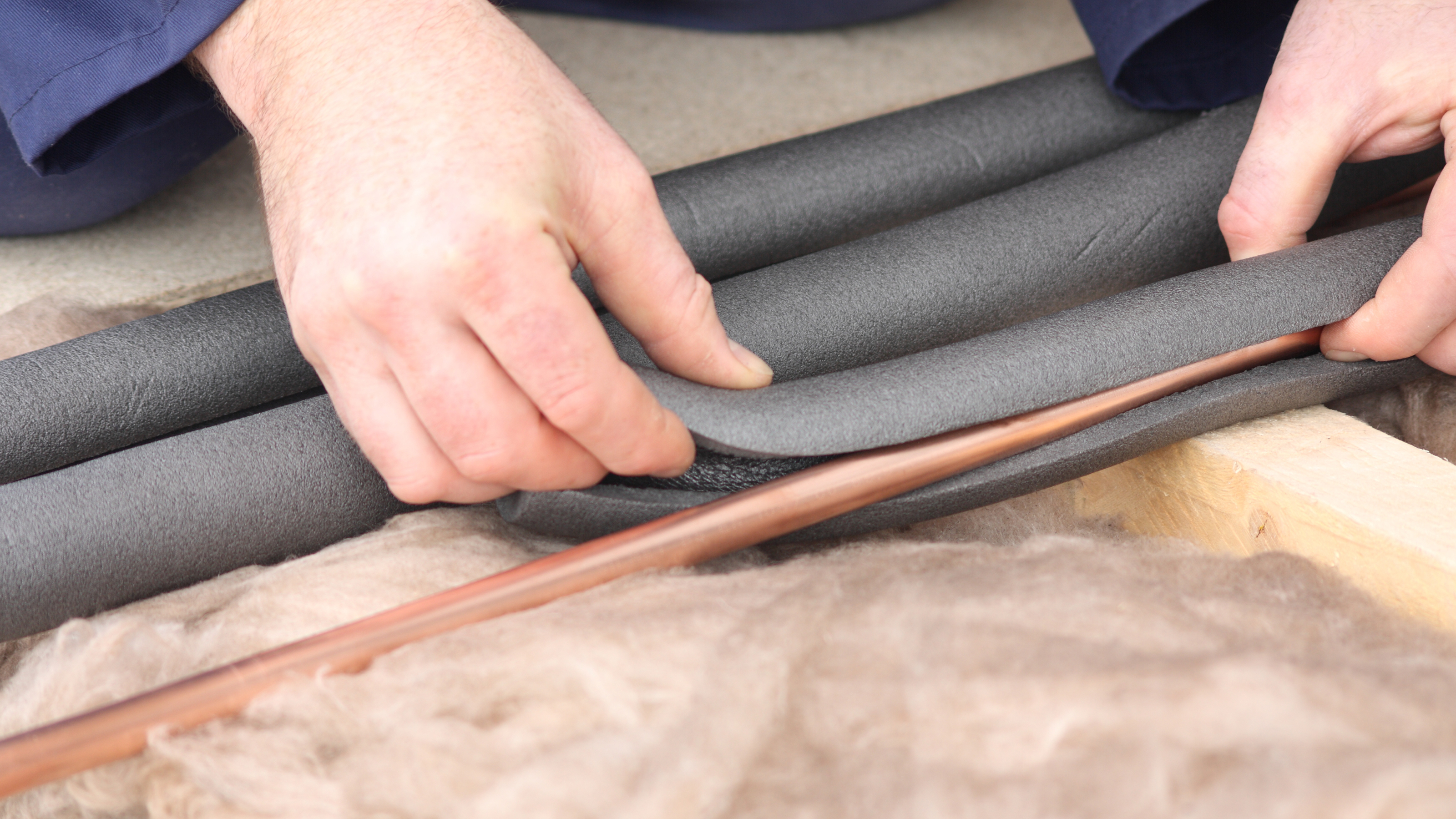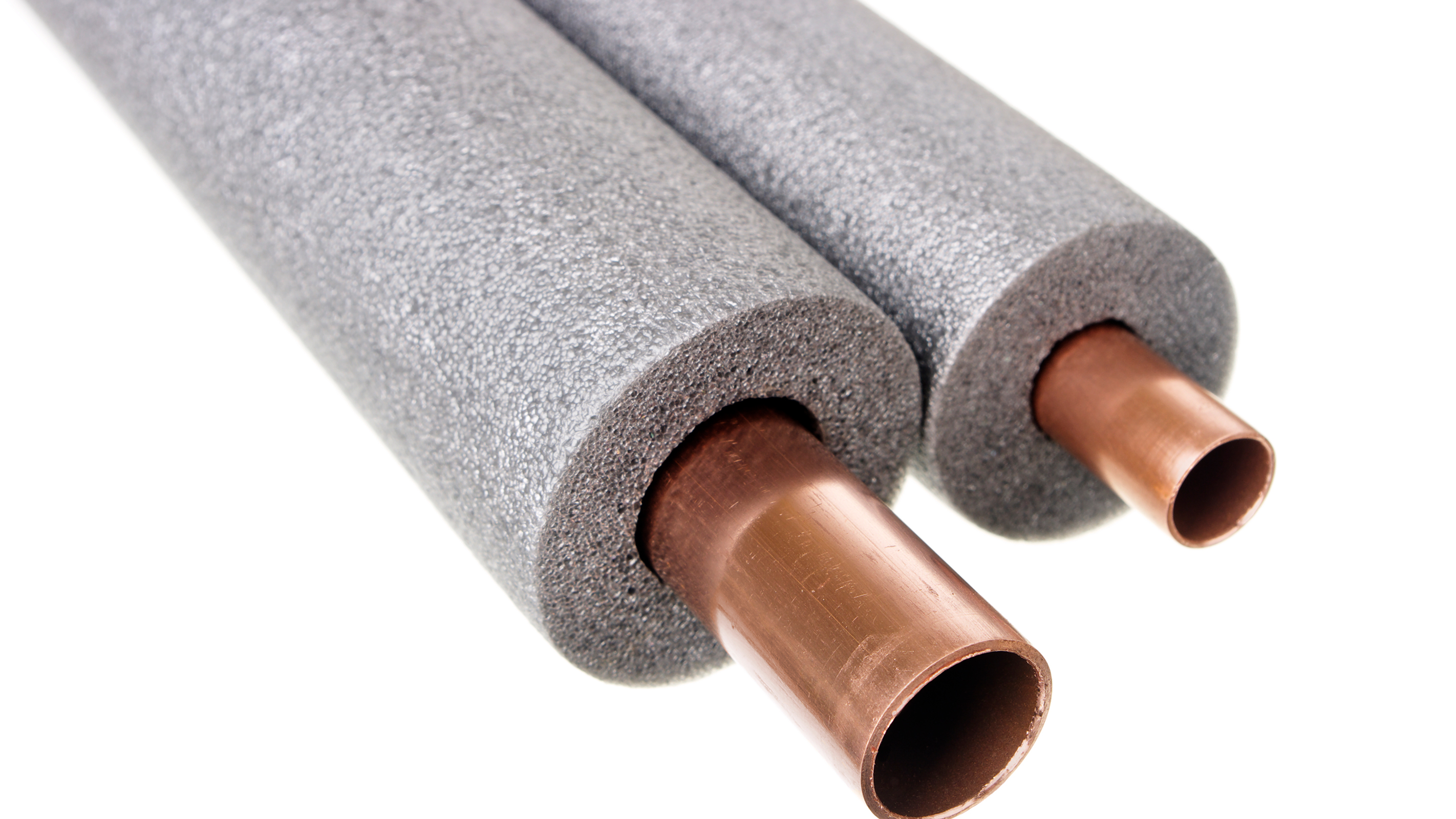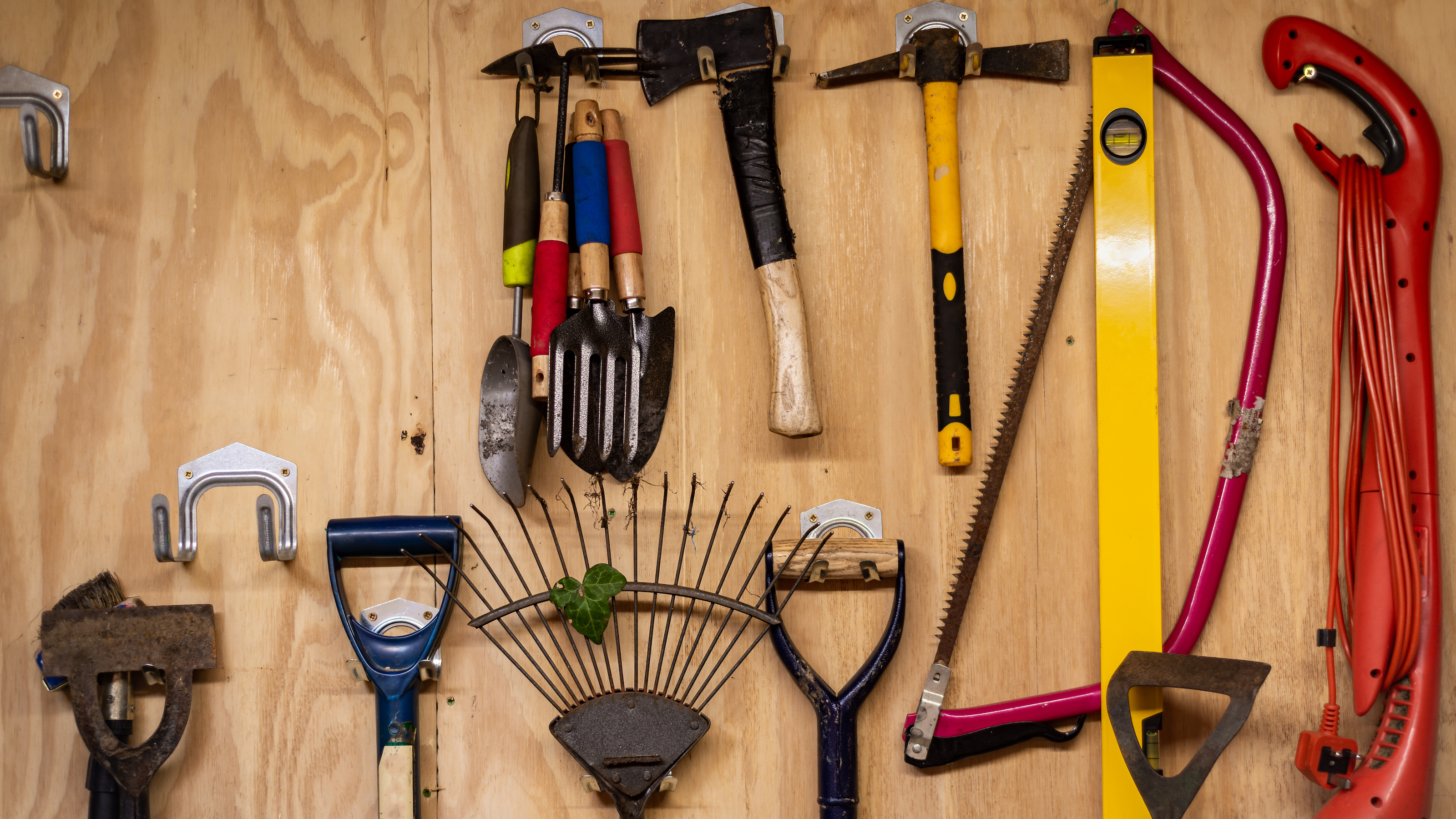How can insulating pipes protect your home this winter?
Insulating pipes could not only protect your heating system from damage as temperatures drop, but pipe lagging can help to lower your energy bills this winter

Insulating pipes is a great way to reduce heat loss in your home, as well as preventing your pipes freezing in winter weather.
The best news is that pipe lagging is a job that is straightforward to undertake on a DIY basis and need not be expensive either — if you have been looking into energy saving tips, then this is definitely not a step to skip.
"A quick and easy technique that can help you save money on your bills for the incoming winter period is pipe lagging," explains Alex Beckwith, bathroom expert at Victorian Plumbing. "By simply wrapping your pipes in insulation, you can prevent and delay the point of freezing. Doing this will help you keep your bills down and have your system working even more efficiently."
Our guide is here to explain the benefits of pipe lagging, the best ways of insulating pipes and the kind of costs you can expect when carrying out this job.
Why is insulating pipes important?
Within your house, there will be a whole network of pipework that carries hot water around it, from the boiler to your radiators and taps and so on. When it comes to looking into how to insulate your house, you want to do everything you can to keep these pipes in sound condition and to ensure that the water your boiler has worked so hard to heat, stays that way and doesn't cool off too quickly on the way to its final destination — and this is where pipe insulation comes into play. During the colder months it is more important than ever to carry out this task.
"It is important to do this over the winter period due to the strain the cold weather can place on your boiler," explains Alex Beckwith. "Heat loss can be costly during this period, so placing a focus on pipes from your boiler, pipes leading to your radiators, and hot water supply pipes can help to greatly reduce this."
"In winter it is common for the boiler condensate pipe to freeze, causing the boiler to stop working," says Lucy Johnston, Assistant Category Manager at City Plumbing. "Adding pipe lagging to this pipe will help prevent the pipe freezing, avoiding an unnecessary call out."
The main reasons why insulating pipes is such a worthwhile task, include:
- It prevents burst pipes: If the water in your pipes freezes it can cause pipes to burst. Keeping the water inside them warm, through insulation, will prevent this.
- It reduces the likelihood of condensation and damp: Water vapour settles on very cold pipes. Not only can this cause copper pipes to corrode, but it can also cause condensation and damp to form within the walls.
- It can make your home quieter: Any noisy gurgling and clonking noises that might have been coming from your heating system will be muffled after the introduction of pipe lagging.
- It adds a level of safety: Hot water running through pipes can cause the exterior of them to become searing hot to touch. Adding a layer of insulation will prevent any nasty burns.
What is pipe lagging?
The main way in which hot water pipes are insulated is by using pipe lagging, which effectively involves wrapping your pipes in an insulating material in order to keep the cold from reaching them and from heat being lost through them.
Pipe lagging comes in many different forms, from foams to tapes. While most pipe lagging can be installed on a DIY basis, in other cases – particularly when dealing with hard-to-reach pipework, it can be best to call in a plumber.
What is the best pipe insulation?
Just as when insulating a wall you will find yourself faced with different materials for the job. And the same is true for pipe lagging, as there are a few different types available — with some more effective than others.
"Insulating pipes well is not only in the technique, but also can result from the products you buy," says Alex Beckwith. "When it comes to the type of lagging you use, phenolic foam is considered to be most efficient due to its density. Also, ensure you are using insulation tape when finishing off to keep your lagging sealed and working at its top form; duct tape is also a good choice."
Types of pipe insulation
When choosing pipe lagging materials you will be faced with a few different options which are likely to include:
- Phenolic foam and polyethylene: Phenolic foam is widely regarded as one of the best materials for thermal insulation. It is sold in lengths from 1m and can be mitred and cut to fit bends. It is important to seal joins with aluminium foil tape. Polyethylene lagging is also sometimes called flexible plastic foamed insulation. This is probably the most widely used type of pipe insulation.
- Mineral or glass wool – Another good choice, mineral wood has really good thermal properties — plus it offers acoustic insulation and is able to withstand high temperatures. It is also fire-retardant. In addition, it won't shrink or rot. It can be bought in pipe form, covered in foil.
- Elastomeric rubber: Also known as flexible elastomeric foam, this rubbery material is sold in tube form. It is really bendy and easy to fit, plus it is very resistant to moulds, fungi and bacteria — and is also great at preventing condensation. Due to its strength, it can be used to insulate external pipework too.
- Lagging tape: Unlike the other types of pipe insulation above, this is sold in rolls. It is generally self-adhesive and is designed to be wrapped several times around your pipes. It is best reserved for smaller areas of pipework as wrapping around longer lengths can be time consuming. It can be made from rubber foam, cork, foil or plastic.
- Pipe wrap: Insulation wraps come in various forms. Traditional felt wrap, or sleeving, is usually designed to slip over pipes, so is best reserved for cases where new pipes are being fitted rather than retrofit situations. However, other types of pipe wrap, such as those made from sheep wool, are simply wrapped around the pipes and secured with tape.
It is important to get a good seal on whichever type of lagging you use — you can buy insulation tape designed specifically for this purpose. Some pipe lagging comes with 'self-sealing' edges, but it can still be a good idea to double up over this with extra tape.

How much does pipe insulation cost?
This is not an expensive job — meaning the benefits are within the reach of most. Of course how much insulating your pipes will cost you very much depends on how many pipes you are insulating and how long they are.
Rubber foam lagging can be picked up for as little as around £2-3 for a 1m length, while phenolic pipe insulation can cost from as little as around £4.50 for 1m. Foil-covered mineral wool lagging can be purchased for around £5.50 per metre. Of course, it is likely you will need longer lengths than this and it usually works out to be cheaper to buy longer sections.
"It generally costs £1.75 per metre to insulate a pipe, say The Eco Experts. "This typically adds up to £20 to insulate the primary pipework — that is, all the pipes between your hot water tank and boiler."
This is based on fitting the pipe insulation on a DIY basis, rather than paying a plumber to carry out the job, which will obviously increase costs.
Get the Homebuilding & Renovating Newsletter
Bring your dream home to life with expert advice, how to guides and design inspiration. Sign up for our newsletter and get two free tickets to a Homebuilding & Renovating Show near you.
Natasha was Homebuilding & Renovating’s Associate Content Editor and was a member of the Homebuilding team for over two decades. In her role on Homebuilding & Renovating she imparted her knowledge on a wide range of renovation topics, from window condensation to renovating bathrooms, to removing walls and adding an extension. She continues to write for Homebuilding on these topics, and more. An experienced journalist and renovation expert, she also writes for a number of other homes titles, including Homes & Gardens and Ideal Homes. Over the years Natasha has renovated and carried out a side extension to a Victorian terrace. She is currently living in the rural Edwardian cottage she renovated and extended on a largely DIY basis, living on site for the duration of the project.

